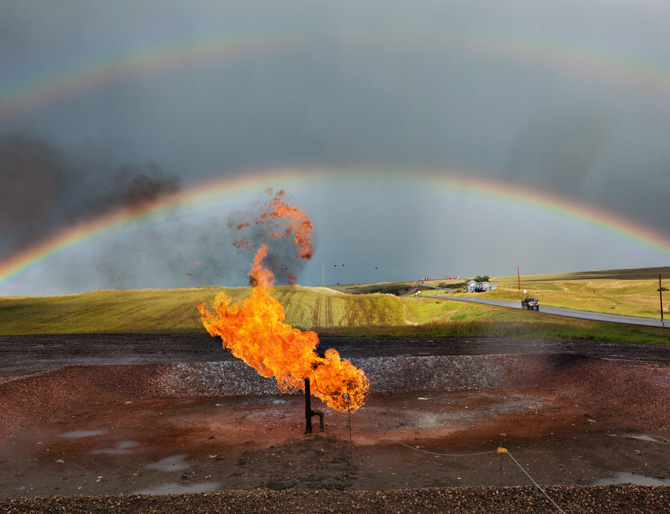EnergyFromShale.org, the industry website, says,
“The oil and natural gas production industry uses these lessons to develop best practices to minimize the environmental and societal impacts associated with development.”
The image above from National Geographic, The New Oil Landscape, March, 2013, suggests that the ideal is far from the reality. And even if the “Frackers” used “Best Practices”, “Best Practices” for a carbon source of energy is not “Best Practice” for an sustainable economy. Efficient use of energy obtained via solar, wind, geothermal, marine hydro and in stream hydro are best practices. Fracking doesn’t even come close.
But even if extraction was done in such as manner as to isolate all heavy metals, carcinogens, radioisotopes and other pollutants from the biosphere, the whole point of hydro-fracturing is to extract carbon from beneath the earth, in order to burn it and transfer carbon dioxide – a greenhouse gas – into the atmosphere.
Bill McKibben, of 350.org, R. P. Siegel, who co-wrote Vapor Trails and writes for Triple Pundit, Al Gore, who won the popular vote for US President in 2000, and many others, including myself, who think about global warming and climate change and see the challenges presented by our need for energy and the potential of clean, renewable, sustainable energy suggest that it would be better to use wind, solar, geothermal, and other fuel free systems, and to manufacture fuel from sewage, garbage, agricultural waste and algae than to dig fossil fuels – and heavy metals – out of the ground – and in so doing severely damage the biosphere.
But I think we agree that “Fracking” is aptly named.
–
Part 2 in a Series.
- L. Furman, 3/12/13, Hydro Fracturing, aka Fracking, Dirty & Ugly, but What Choice do we Have?
- L. Furman, 3/14/13, Fracking, Best Practices versus Current Practice
—
An analyst with Popular Logistics, Lawrence J. Furman holds a Bachelor’s in Biology, an MBA in “Managing for Sustainability” from Marlboro College, experience with information technology. He can be reached at ‘L Furman 97” @ G Mail.

